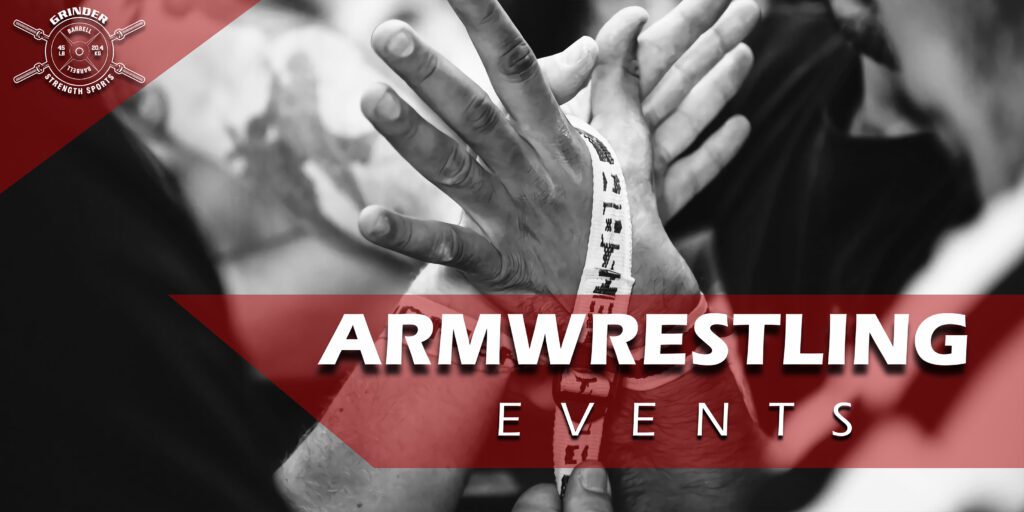
Armwrestling is a sport that demands a unique combination of strength, technique, endurance, and mental toughness. A well-rounded training program is essential to develop these attributes and succeed in competitions. This article provides an overview of the foundational aspects of armwrestling training programs, detailing the various components that make up a comprehensive routine.
Key Components of an Armwrestling Training Program
1. Strength Training
Strength is the cornerstone of armwrestling success. Training should focus on the muscles most involved in armwrestling: forearms, biceps, triceps, shoulders, and grip.
- Forearm and Grip Strength:
- Wrist Curls and Reverse Wrist Curls: Strengthen the forearm flexors and extensors.
- Grippers: Improve crushing grip strength.
- Finger Rolls: Enhance grip strength and finger coordination.
- Wrist Roller: Develops wrist strength and endurance.
- Bicep and Tricep Strength:
- Bicep Curls and Hammer Curls: Target the biceps and brachialis.
- Tricep Pushdowns and Skull Crushers: Strengthen the triceps for better arm extension and control.
- Shoulder Strength:
- Overhead Press and Lateral Raises: Strengthen the deltoids and improve shoulder stability.
- Front Raises: Enhance shoulder strength and stability.
- Core Strength:
- Planks, Russian Twists, and Leg Raises: Build overall core strength for better power transfer and stability.
2. Technique Training
Mastering the techniques of armwrestling is crucial. Proper technique can often compensate for a lack of brute strength and significantly improve performance.
- Hook Technique: Involves curling your wrist and pulling your opponent towards you, using your bicep and forearm strength.
- Toproll Technique: Focuses on attacking your opponent’s fingers and hand, using wrist flexors and pronators.
- Press Technique: Involves pushing down on your opponent’s hand using your shoulder and triceps strength.
3. Endurance Training
Endurance is essential for maintaining strength and technique throughout a match, which can often be long and grueling.
- High-Rep Strength Training: Incorporate high-rep exercises to build muscular endurance.
- Circuit Training: Perform a circuit of armwrestling-specific exercises with minimal rest between sets.
- Isometric Holds: Practice holding armwrestling positions for extended periods.
- Cardiovascular Conditioning:
- Interval Training: High-intensity interval training (HIIT) boosts cardiovascular fitness and anaerobic endurance.
- Steady-State Cardio: Activities like running or cycling improve overall endurance.
4. Flexibility and Mobility
Flexibility and mobility are vital for optimal movement and reducing the risk of injury.
- Dynamic Stretching: Incorporate dynamic stretches in your warm-up to prepare the muscles for lifting.
- Leg Swings, Arm Circles, and Torso Twists: Improve range of motion and prepare the body for training.
- Static Stretching: Use static stretches post-workout to maintain flexibility and reduce muscle tightness.
- Hamstring Stretch, Quad Stretch, and Shoulder Stretch: Target key muscle groups.
5. Conditioning
Conditioning exercises improve overall physical fitness, contributing to better performance and endurance.
- Sport-Specific Drills:
- Resistance Band Training: Mimics armwrestling movements and builds sport-specific strength.
- Ready-Go Drills: Practice explosive starts and holding positions to simulate match conditions.
- General Conditioning:
- Running, Cycling, and Swimming: Enhance cardiovascular health and overall conditioning.
Structuring a Well-Rounded Armwrestling Training Program
A balanced armwrestling training program should integrate all the key components discussed above. Here’s an example of how to structure a weekly routine:
Monday – Strength Training:
- Warm-Up:
- 5-10 minutes of light cardio
- Dynamic stretches (leg swings, arm circles)
- Workout:
- Bicep Curls: 4 sets of 10 reps
- Wrist Curls: 4 sets of 15 reps
- Tricep Pushdowns: 4 sets of 10 reps
- Overhead Press: 4 sets of 8 reps
- Finger Rolls: 3 sets of 20 reps
- Cool-Down:
- Static stretches (hamstring stretch, quad stretch)
Wednesday – Technique and Conditioning:
- Warm-Up:
- 5-10 minutes of light cardio
- Dynamic stretches
- Workout:
- Hook Technique Practice: 10 minutes
- Toproll Technique Practice: 10 minutes
- Ready-Go Drills: 3 sets of 10 reps
- HIIT Circuit: 4 rounds of 1-minute burpees, 1-minute rest
- Cool-Down:
- Static stretches
Friday – Endurance and Mobility:
- Warm-Up:
- 5-10 minutes of light cardio
- Dynamic stretches
- Workout:
- Circuit Training: 3 rounds of:
- Push-Ups: 15 reps
- Planks: 1 minute
- Bodyweight Squats: 15 reps
- Russian Twists: 20 reps
- Isometric Holds: 3 sets of 1 minute
- Circuit Training: 3 rounds of:
- Cool-Down:
- Static stretches
- Foam rolling
Saturday – Recovery and Flexibility:
- Warm-Up:
- 5-10 minutes of light cardio
- Workout:
- Yoga Session: 30 minutes focusing on flexibility and relaxation
- Light Resistance Band Exercises: 2 sets of 20 reps
- Cool-Down:
- Static stretches
Tips for Successful Armwrestling Training
1. Consistency: Regular training is essential for making progress. Stick to your routine and gradually increase the intensity and volume of your workouts.
2. Proper Form: Focus on maintaining proper form and technique during all exercises to prevent injuries and maximize effectiveness.
3. Listen to Your Body: Pay attention to signs of fatigue and overtraining. Allow adequate time for recovery and adjust your program as needed.
4. Set Goals: Establish clear, achievable goals for your training. Track your progress and celebrate milestones to stay motivated.
5. Seek Guidance: Consider working with a coach or experienced armwrestler to refine your technique and optimize your training program.
Conclusion
A well-rounded armwrestling training program integrates strength training, technique practice, endurance training, flexibility, and conditioning. By understanding and incorporating these components, you can develop the physical and technical skills necessary for success in armwrestling. Use the example routines and tips provided to structure your workouts and achieve your armwrestling goals. Stay dedicated, train smart, and continually refine your skills to become a formidable competitor on the armwrestling table.



